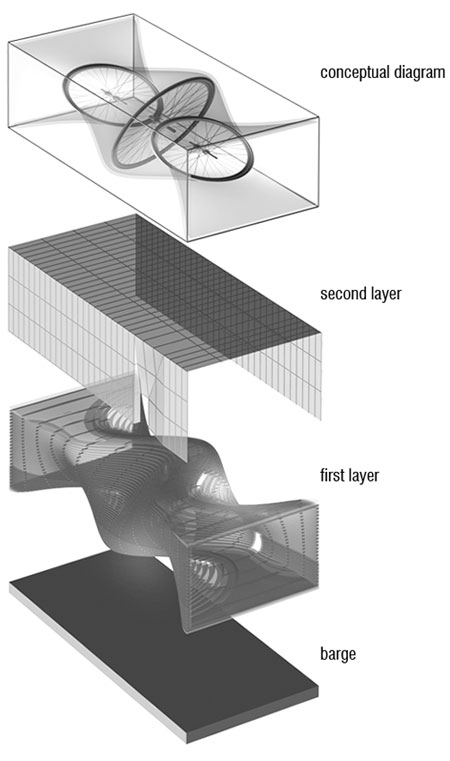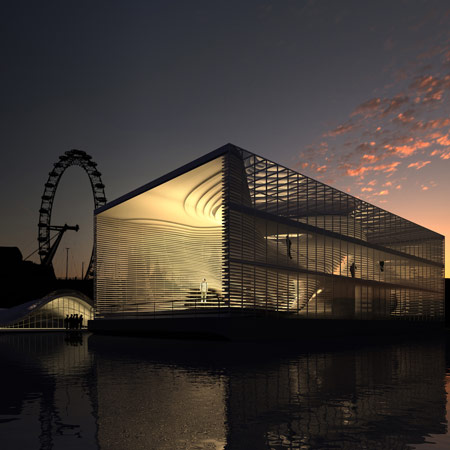
Adaptable architecture gallery
A group of Brazilian architects have sent us these images of a conceptual, mobile gallery, designed to travel along the river Thames in London.
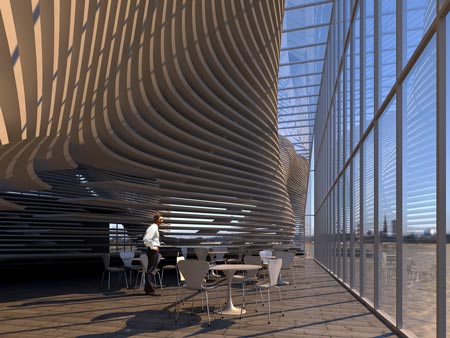
The project was developed for a competition organised by architectural agency Arquitectum, called London 2008, by a team of architects made up of Victor Paixao, Miguel Felipe Muralha, Paula Sertorio, Thiago Florez, Andre Mack and Bruno Castro.
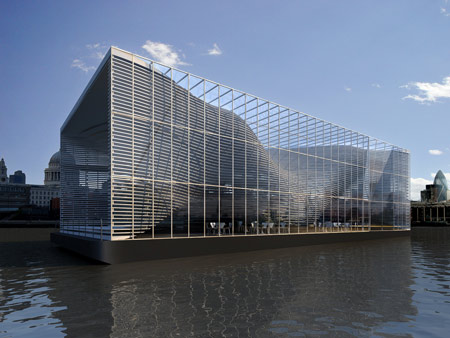
The brief was to design a mobile architecture gallery which could travel along the river and pick up visitors at several locations.
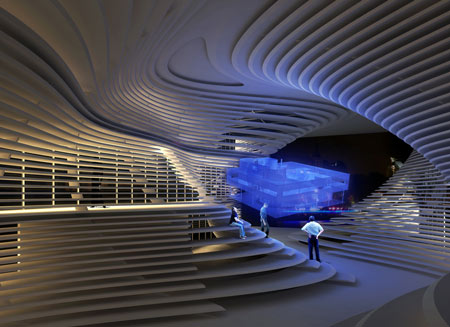
The project was awarded an honorable mention by a panel of judges chosen by the Architectural Association. See the other winning concepts on the Arquitectum website.
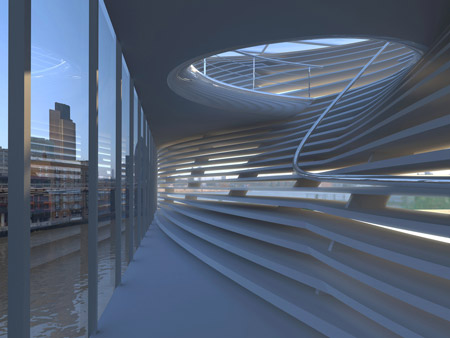
Watch a video about the project here.
The text below is from the designers:
--
Two distinct elements result in an area that symbolizes the dynamics of the city and expresses the unpredictability of human occupation.
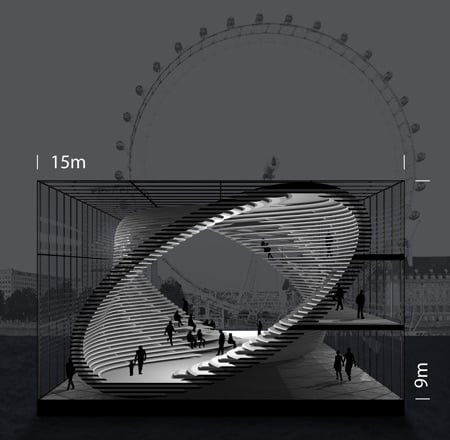
The constant lightness, transparency and visual permeability enable a relationship with the city throughout the course of the river, offering different visions and perspectives of the London landscape. Looks get lost trying to distinguish internal and external space.
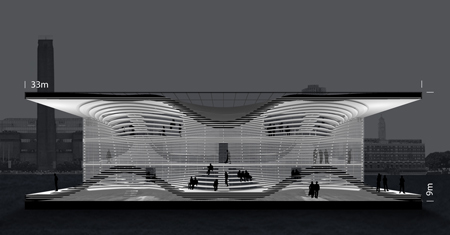
The first element is composed by a form generated by three ellipses that suggests the occupation of the spaces and allows, through the permeability of the structure, the interaction and visibility of the user from any location.
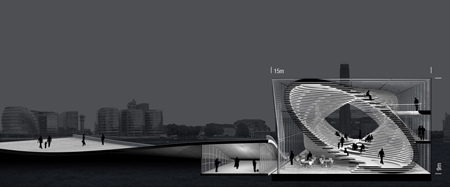
A winding and fluid space allows individual events, creates different environments, or integrates the entire space of the gallery by projections, holograms, multimedia presentations and virtual experiments, proposing not just a single focal point, but a new perceptive universe.
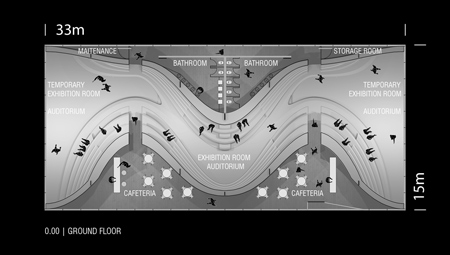
The second element determines the limits of the gallery and allows the maximum use of internal space. The rigid form ensures environmental comfort.
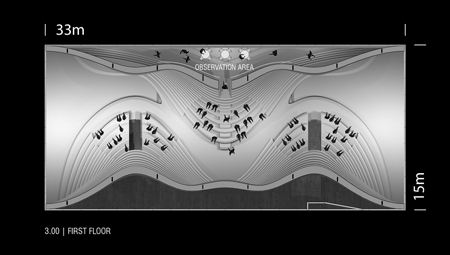
A "switchable glass" system controls the opacity of the glass, which can be changed it to suit the needs of internal activities.
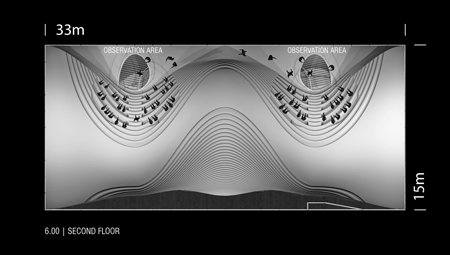
The facade may serve externally as a support for advertising and as a vehicle for digital media, reversing the perspective and bringing the attention to Thames river.
